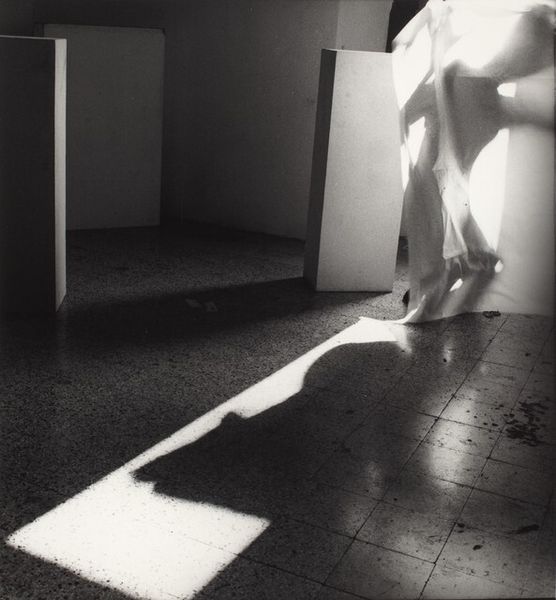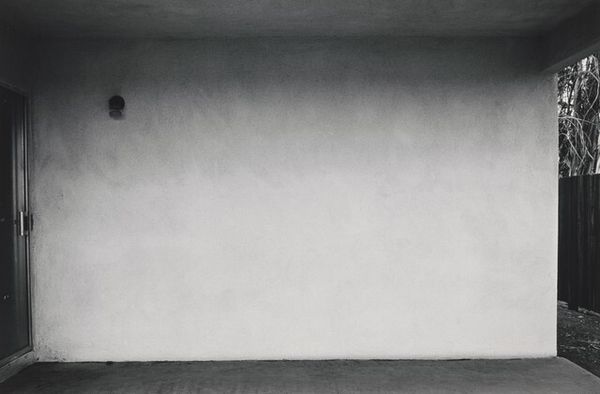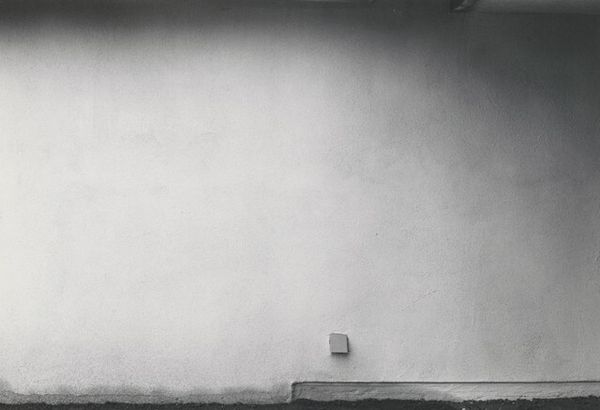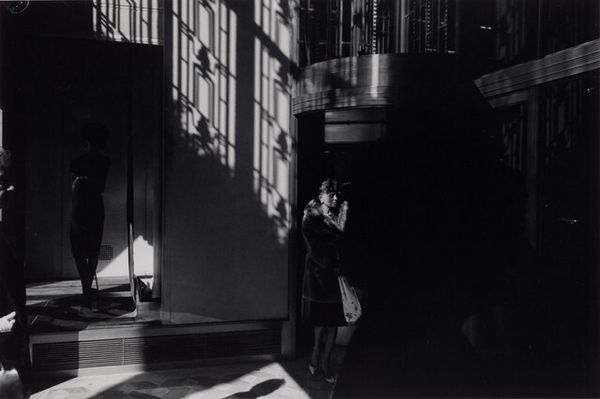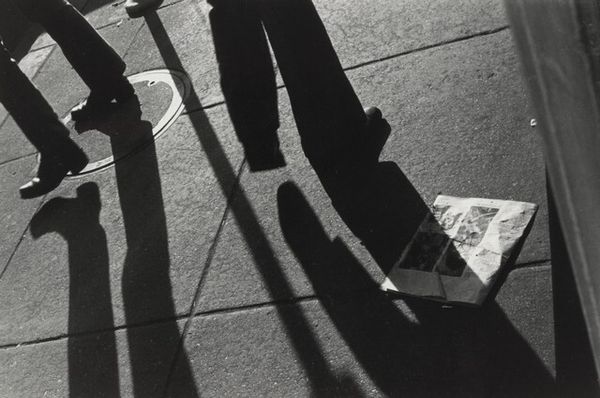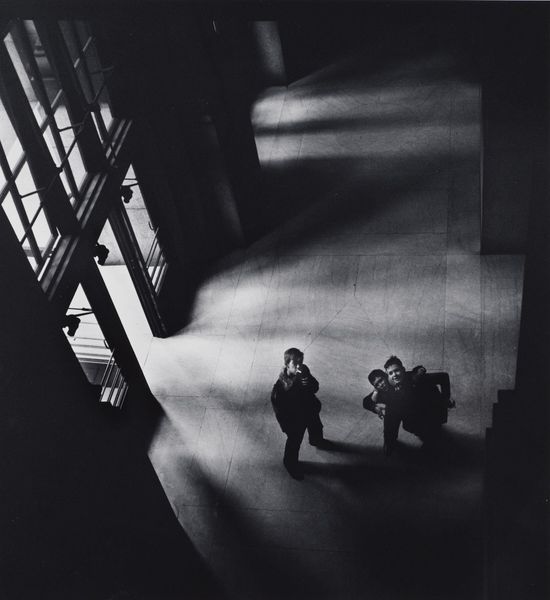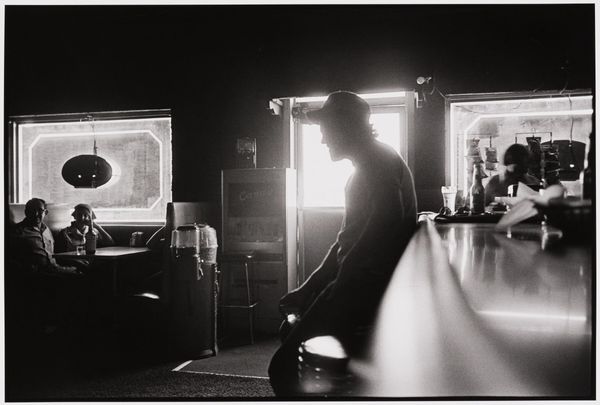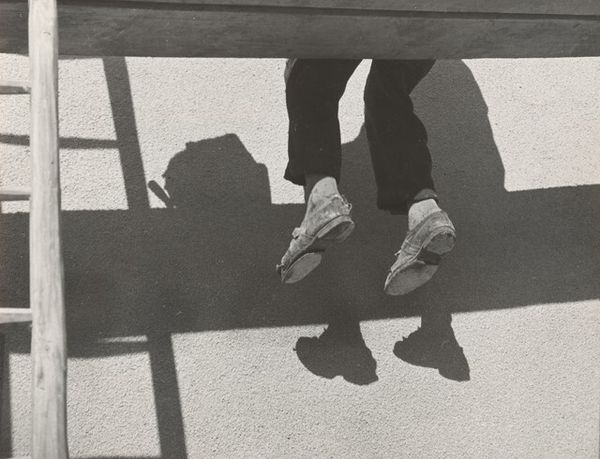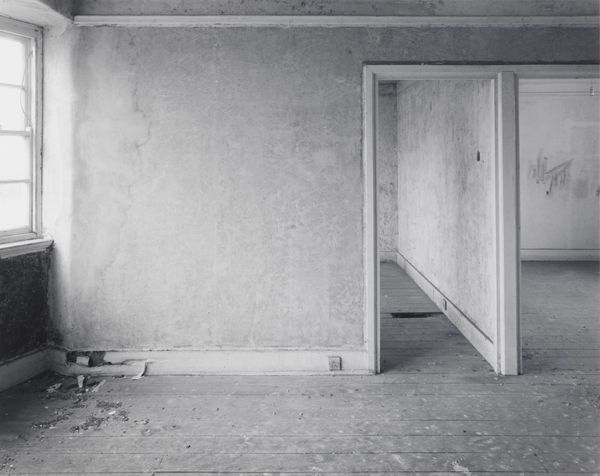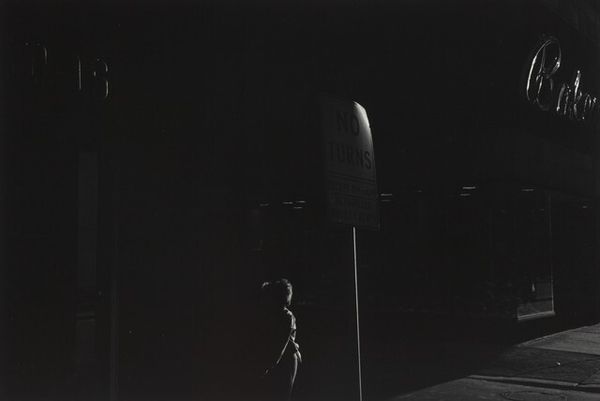
Dimensions: image: 19.2 x 28.5 cm (7 9/16 x 11 1/4 in.) sheet: 27.7 x 35.7 cm (10 7/8 x 14 1/16 in.)
Copyright: National Gallery of Art: CC0 1.0
Editor: This is Ray Metzker's "New Mexico," a gelatin silver print, possibly made between 1971 and 1983. The stark contrast between light and shadow is so striking, creating a strong sense of depth. What compositional elements stand out to you in this work? Curator: The interplay of light and shadow indeed forms the essence of the composition. Observe how the diagonal lines of light fracture the space, creating a geometric pattern that leads the eye deeper into the frame. The human figure, relegated to a secondary plane, serves almost as a punctuation mark within this arrangement of light and form. Editor: It's like a stage almost, with the figure as an actor. Are you saying the person is less important than the light itself? Curator: Precisely. The figure's identity and narrative context are deliberately obscured. What remains is the formal arrangement: the stark geometries, the gradations of tone, and the rhythmic repetition of light and shadow. These are the elements upon which the photograph's success hinges. Metzker is presenting the aesthetic of photography as primary. Editor: I see what you mean. The "what" is less important than the "how." That totally shifts how I see this photo. Curator: Indeed. The power lies not in what is depicted, but in how it is rendered. Through his manipulation of light and shadow, Metzker invites us to contemplate the intrinsic visual qualities of the photographic medium itself. Editor: This has given me a whole new way of thinking about formalism in photography! I appreciate you shedding some light on it. Curator: A fitting analogy, given our subject matter. Considering this photograph, formalism teaches us to appreciate the building blocks of art, devoid of external narratives.
Comments
No comments
Be the first to comment and join the conversation on the ultimate creative platform.
